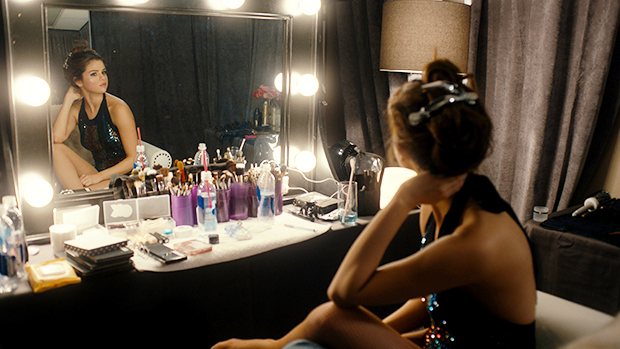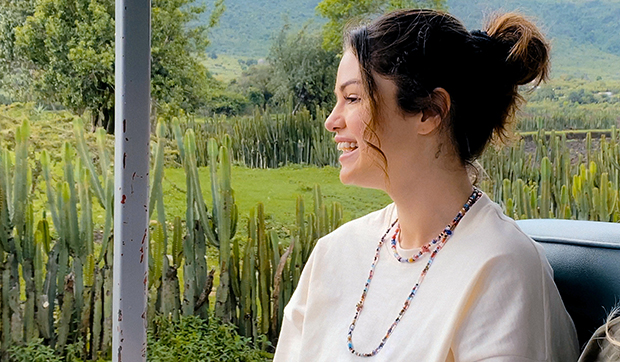“I wish you could feel what it feels like to be in my head,” Selena Gomez confessed to fans, critics, and everyone in between in her new documentary, Selena Gomez: My Mind and Me, set for release November 4 on AppleTV+. Selena and director Alek Keshishian take viewers back to some of the star’s most turbulent times in her life, including the moment she suffered what those closest to her call a “psychotic break.”

“I’m going to be very open with everybody about this: I’ve been to four treatment centers,” Selena told Rolling Stone in an interview ahead of the film’s premiere. “I think when I started hitting my early twenties is when it started to get really dark, when I started to feel like I was not in control of what I was feeling, whether that was really great or really bad.”
The film starts both with what was known and unknown. In 2016, fans knew Selena canceled her highly anticipated Revival Tour after only 55 dates and checked into a treatment facility in Tennessee, citing issues with anxiety, panic attacks, and depression as a result of her lupus. But the documentary reveals there was much more.
In the first 15 minutes, we see Selena break down in tears after her final dress rehearsal for the tour. Overwhelmed by the pressure, nitpicking on everything from her singing to her outfits, the star seems stretched thin. And then she drags the elephant into the room: her ex, Justin Bieber. Frustrated, she asks her people, “When am I going to be just good enough by myself? When am I going to be good just myself, not needing anyone to be associated with?” It’s a fair question, but Justin was only one piece in Selena’s mental health puzzle.

Those closest to her reveal in interviews the terrible truth behind the time that follows: how the pain of her lupus made her incredibly weak, how the pressures of performing took an immense toll on her, and how before she was diagnosed with bipolar disorder, Selena was in serious trouble. By 2018, she was hearing voices, and these voices triggered an episode of psychosis.
Her former assistant, Theresa, actually says that Selena told her she didn’t want ‘to live’ anymore at her darkest hours. “It was one of those moments when you look into her eyes and there was nothing there. It’s just pitch black.” Her closest friend Raquelle Stevens, who is a huge presence in Selena’s life, goes on to explain what it was like to see her friend in immense pain once she was finally admitted to a mental hospital in 2018, after she had what Raquelle calls a “psychotic break”.
“If anybody saw what I saw, the state that she was in at the mental hospital, they wouldn’t have recognized her at all,” Raquelle shared. “I was devastated because psychosis lasts from days to weeks to months to years to life.” They situation was so dire, that Selena’s own mother Mandy reveals she didn’t even know her daughter was in crisis, until TMZ called her. “They called me and wanted to know what my daughter was doing in the hospital with a nervous breakdown. She didn’t want anything to do with me and I was scare she was going to die.”
But the reason Selena shut out her own mother was presumably because she was in the throes of dealing with her bipolar disorder. As the film moves forward three years to 2019, Selena is home from the hospital with new perspective and new information about her disorder. “I’m gonna be honest, I didn’t want to go to a mental health hospital,” Selena confesses. “I didn’t want to — but I didn’t want to be trapped myself in my mind anymore.”
“That’s why I say to my people that are the greatest friends and family especially my mom and my stepdad, Brian,” Selena added, “because I shouldn’t have spoken to them the way that I did and it shouldn’t have treated them the way that I did some times… I remember certain things that I did. And I was really so mean. And so even to this day, I keep saying thank you and I’m sorry.”

While Selena manages to get a handle on her bipolar disorder, her struggles are far from over. The documentary follows the trials and tribulations of her comeback with her album celebrated album Rare in 2019, her Kenya trip with the WE Foundation in the same year, and most recently, her relapse with lupus during the pandemic. During a low point, Selena admitted to her friends that, despite being beloved by millions, most of which follow her on Instagram, she was ready to leave her whole career behind. “I want to quit so I can be happy and be normal like everyone else,” she told them. But as we know, she doesn’t leave her career to languish, but rather puts her position to good use.
“I don’t want to be super famous, but if I’m here I have to use it for good,” Selena says, and she’s doing just that to this day. With the launch of her company Rare Beauty, she established that a significant amount of the proceeds would go toward efforts to provide underserved communities with access to mental health services. More recently, she was on hand at the White House to launch the inaugural White House Conversation on Youth Mental Health led by First Lady, Dr. Jill Biden. But her biggest step in helping others is the release of this documentary which gives an unprecedented look at the struggle with mental health with someone so young and seemingly, with the world at her feet.
“I just constantly remind myself that there’s a reason I’m here,” Selena explained to Rolling Stone. “It sounds really cheesy when I say it sometimes, but I truly don’t know how else I’d be here, simply based on the medical stuff and balances in my head and conversations I’d had with myself [that were] really dark.”